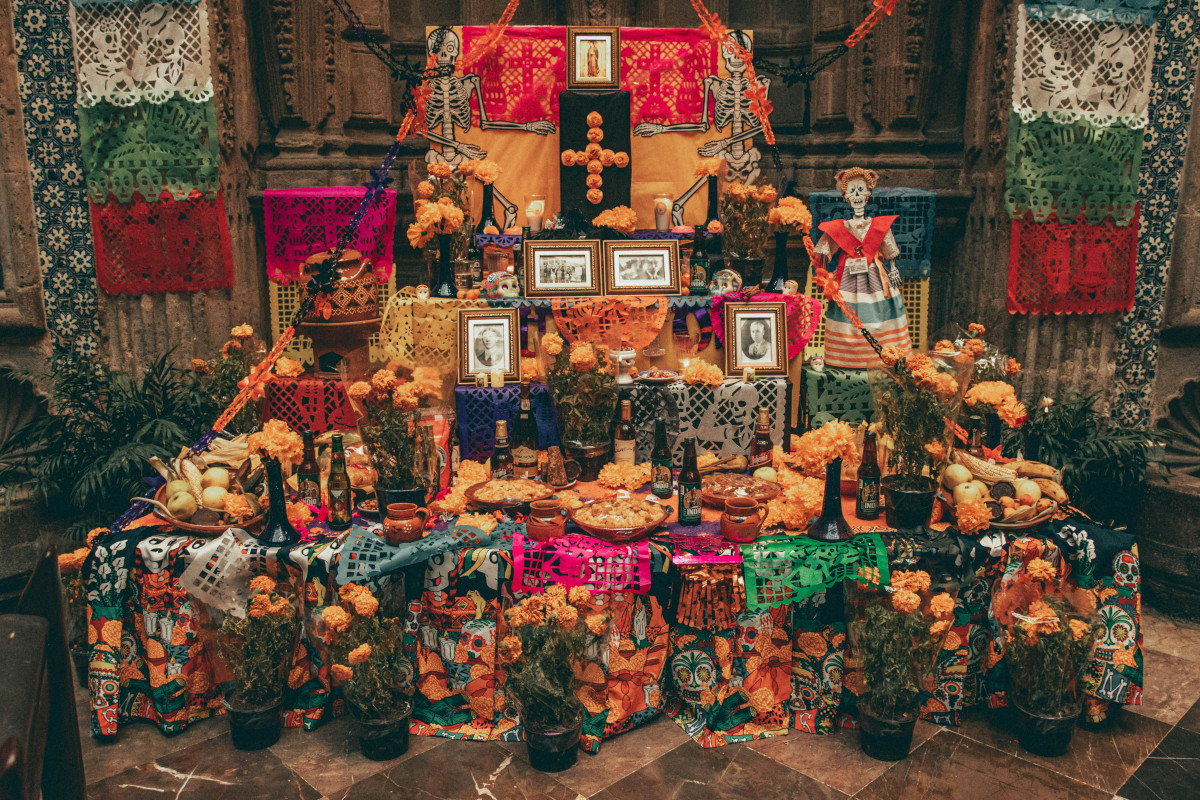Your cart is currently empty!

Día de Muertos in Mexico
Remembering with joy, not fear
Día de Muertos (Day of the Dead) is one of Mexico’s most iconic and deeply felt cultural traditions. Far from a morbid celebration, it is a time for families and communities to remember, honor, and joyfully reconnect with those who have passed. Observed on November 1 and 2 each year, the holiday blends Indigenous beliefs about death and the afterlife with Catholic feast-day calendars to create an expression of remembrance that is uniquely Mexican, vibrant, tender, and full of life.
This cultural tradition is greatly valuable on multiple accounts:
- A living memory practice: Día de Muertos keeps the presence of loved ones alive through ritual — making altars, sharing foods, and telling stories. Memory here is communal and active, not merely private mourning.
- Cultural identity and continuity: The holiday connects modern Mexico with pre-Hispanic spiritual worldviews about cyclical life and interconnectedness between the living and the dead. It sustains languages, crafts, recipes, and local customs passed down through generations.
- Social and spiritual healing: For many families, the rituals provide solace and a structured way to grieve, celebrate, and restore bonds. They turn loss into a meaningful, shared experience.
- Artistic and communal expression: From elaborate altars to papel picado and painted skulls, Día de Muertos fuels some of Mexico’s most recognizable art forms and craft traditions, supporting artisans and local economies.
There are many traditions and symbols associated with Día de Muertos:
- Ofrendas (altars): Central to the observance, family ofrendas are assembled at home, in churches, or in public spaces. They honor specific people with photos, personal items, favorite foods and drinks, candles, flowers, and written remembrances. Each element is symbolic — from salt for purification to mirrors and water for the soul’s journey and refreshment.
- Cempasúchil (marigolds): The bright orange marigold is believed to help guide spirits back to the world of the living with its vivid color and scent. Paths of petals often lead from doorways to altars or graves.
- Calaveras (skulls) and calacas (skeletons): Playful skull imagery — sugar skulls, decorative skulls, and costumed calacas — treat death with humor and acceptance. They represent the continuity of life and the personality of the deceased.
- Pan de muerto: A sweet, round bread often decorated with bone-shaped pieces, pan de muerto is a staple offering and a shared food that connects households through taste and ritual.
- Papel picado: Colorful, perforated paper banners flutter above altars and streets, symbolizing the fragility of life while adding movement and celebration to the scene.
- Candles and incense (copal): Candles illuminate the path for returning spirits; incense purifies and sanctifies spaces.
- Cemetery vigils: Families gather at gravesites to clean and decorate tombs, hold vigils, sing, share food, and sometimes keep watch through the night. These gatherings can be intimate family affairs or exuberant community events.
Día de Muertos is not monolithic. Traditions vary widely across Mexico.
- In some regions communities build monumental public altars or hold parades and large processions.
- In Michoacán, particularly the Lake Pátzcuaro area and Janitzio Island, lengthy cemetery vigils and offerings have deep, distinctive forms.
- Oaxaca, Mixquic (near Mexico City), the Yucatán, and other states each contribute specific foods, music, dances, and ritual details. These local expressions are central to the holiday’s richness.
If you are planning to experience Día de Muertos in Mexico or anywhere around the world where the Mexican diaspora observe this tradition, you are in for an amazing cultural experience — please follow these guide to do so respectfully:
- Learn before you go: Read about local customs and the meanings behind symbols. Each town may have its own etiquette.
- Ask permission and follow guidance: If you visit private altars or family vigils, ask respectfully and observe any requests families make.
- Photograph with care: Many people welcome respectful photography, but always ask first — especially at gravesites or intimate family moments.
- Support local artisans and vendors: Buy handcrafted calaveras, papel picado, or traditional foods from local makers rather than mass-produced souvenirs.
- Avoid cultural appropriation: Don’t use sacred symbols as mere costumes or party themes without understanding or respecting their meaning.
- Participate humbly: If invited, share food, listen to stories, and contribute to an ofrenda in a thoughtful, guided way.
Día de Muertos is a profound reminder that memory, love, and community can transform grief into a celebration of life. For travelers and readers, it offers a rare chance to witness how culture, history, and family interweave to honor those who came before. Whether experienced in quiet family homes or lively public spaces, the holiday invites reflection, storytelling, and connection, values that resonate across borders and time.
Credits: Photo by Roger Ce on Unsplash


Leave a Reply